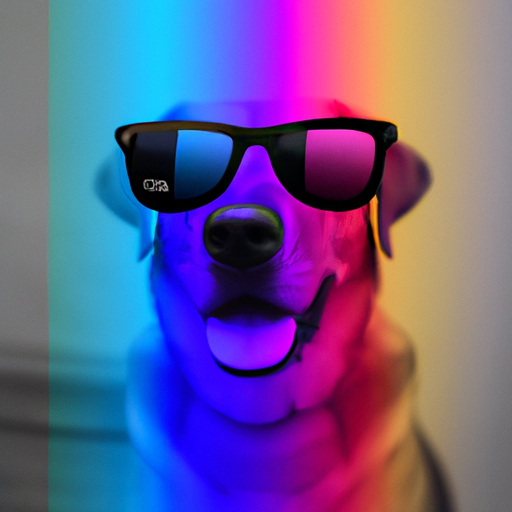Introduction
You’ve probably heard the myth that dogs see in black and white. But, is that really true? As a caregiver, you often wonder what world your four-legged friend is experiencing. In this article, we’ll take a deep dive into the fascinating world of canine vision and answer the question: “What colors do dogs see?”
Understanding Dog’s Vision
Your dog’s vision is different from yours, but it’s not simply black and white. Dogs fall under the category of dichromats, which means they see colors on a two-color spectrum, unlike humans who are trichromats and see a three-color spectrum.
The colors dogs see are primarily blues and yellows. They can’t distinguish red and green, which appear as various shades of gray to them. It’s akin to a human with red-green color blindness.
Here’s a simple table to illustrate the colors a dog can see:
| Human Color | Dog’s Perception |
|---|---|
| Red | Gray |
| Green | Gray |
| Blue | Blue |
| Yellow | Yellow |
How This Affects Their Daily Life
Now, you might be wondering how this color perception affects your dog’s life. The answer is quite a lot.
- Toy Selection: When choosing toys, opt for ones that are blue or yellow. These toys will stand out to your dog against the green grass or the brown floor.
- Training: Using colored cues for training might not be as effective as you’d think. Your red command disk might just look gray to them.
How to Cater to Your Dog’s Vision
Understanding your dog’s vision can help you provide better care. Here are some tips to cater to your dog’s unique vision:
- Use blue or yellow toys for play and training.
- Avoid red or green clothing if you want your dog to easily spot you.
- Use high contrast patterns to help your dog distinguish between different areas.
Frequently Asked Questions (FAQ)
Q: Do dogs only see in black and white?
A: No, dogs see in shades of blue and yellow.
Q: Can dogs see in the dark better than humans?
A: Yes, dogs have better night vision due to a special light-reflecting layer behind their retinas.
Q: Does color vision affect my dog’s behavior?
A: Color vision may have a minor impact on behavior, but scent and sound are more important to dogs.
So next time you look into your dog’s innocent eyes, remember they are perceiving the world differently. Understanding this can help you make their world a little more colorful, even if it’s just blue and yellow.



